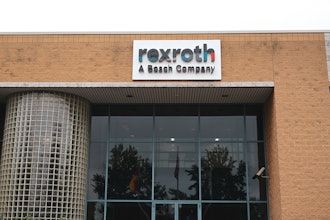
Why Executives Are Using
Cloud PLM To Save Money
Whitepaper
arenasolutions.com
ROI Studies Show How Much
©2014 Arena Solutions, Inc. Arena and Arena Solutions are trademarks of Arena Solutions, Inc., Reg. U.S. Pat. & Tm. Off.
All rights reserved. Other product and company names are the property of their respective holders.
1
arenasolutions.com
Overlooked PLM Delivers Dramatic Cost
Savings to Manufacturers
Here’s a business riddle for MBA grads: What solution
helped a lighting manufacturer reduce engineering change
order (ECO) cycle times by 75%, a networking company
improve ECO cycle times by 70%, and a digital processing
business accelerate time to market by 20%? (1)
The answer?
Product lifecycle management (PLM) software.
While the executives of the aforementioned companies knew the
answer to that question, many manufacturing business leaders,
especially CFOs, remain unaware of the profound financial
benefits of PLM.
This begs the question – why does PLM so often go unnoticed?
According to a recent Pricewaterhouse Coopers report, titled
“Getting the Benefits That PLM Has Promised for Years,” “PLM
is largely still seen predominately as an engineering sell rather than an integral cross-functional solution needed to
manage increasingly complex global business operations.” (2)
Unfortunately, many OEMs — even those frustrated with the use of outdated spreadsheets and silo’d databases
to manage their BOM — maintain this shortsighted view of PLM solutions. An equally frustrating problem is
some companies — especially those with a culture of distrust and blame between operations and engineering
over responsibility for product errors and rising costs — never consider how PLM can make cross-functional
cooperation and communication more efficient.
But the crème de la crème of manufacturing tragedies is when engineering and operation department heads, who
actually know firsthand PLM’s ability to lower costs, speed prototyping, reduce scrap, and streamline supply chain
management, are dismissed by executives who refuse to consider the business benefits of PLM. Without a PLM
solution in place, cross-functional cooperation and communication becomes more opaque, exacerbating a culture
of distrust and blame over product errors between operation and engineering managers.
This begs an even bigger question — why do engineers and operation managers struggle to sell executives
on PLM?
Part of the reason why these department heads fail to communicate the financial benefits of PLM to executives is
because they neither have access to ROI metrics and statistic-oriented case studies nor have taken the time to
overcome the somewhat daunting task of measuring internal performance.
Without metrics, it’s hard to speak the same metric-oriented language as CFOs.
“Show me the money.”
— Jerry Maguire
©2014 Arena Solutions, Inc. Arena and Arena Solutions are trademarks of Arena Solutions, Inc., Reg. U.S. Pat. & Tm. Off.
All rights reserved. Other product and company names are the property of their respective holders.
2
arenasolutions.com
But the biggest reason why CFOs have neither noticed nor embraced PLM may be because their roles have
historically been limited to accounting practices, such as ensuring company compliance with financial reporting
and control requirements — rather than an involvement in more strategic initiatives.
Of course, CFOs naturally see clear ROI when it comes to financial systems, such as enterprise resource planning
(ERP), but PLM – at its core – is an intellectual property management system with huge value not normally
measured in a balance sheet. Simply put: CFOs see how inventory translates to dollars in an ERP system but have
not considered how product quality and time to market translates to tremendous cost savings.
Historically speaking, identifying financial benefits in a PLM system is not as obvious as in an ERP system. But that
may all soon be in the past. A new manufacturing economy requires new champions with a broader, more holistic
view of the enterprise.
From Steward to Captain: The Rise of the Modern CFO
The treacherous waters of a competitive global economy require savvy
fleet commandeers who can heroically navigate their business away
from dangerous rocky shoals and into profitable new ports; because
of this, the role of CFOs at innovative product companies has quickly
evolved from “bean counter,” to strategist, to powerful change agent.
Today, strategic-minded CFOs are now asking such questions as,
“What dominant NPI challenges are restricting business growth, and
what manufacturing tools can help overcome these obstacles?” Or “What emerging supply chain business trends
risk impeding our success, and how can finance help out?”
According to a recent quarterly report by Deloitte, “As companies continue to adapt to volatility while boosting their
pursuit of growth, CFOs are gaining an increased role in strategy.” The aforementioned Deloitte report included
a survey in which CFOs claimed to have strategic input in which industries their companies should enter/exit
(78%), and what businesses to grow/shrink (73%). The report also discovered that CFOs are most likely to actually
spearhead decision-making processes, including where to focus cost-reduction efforts (57%), which performance
measures to track (58%), which businesses to acquire/divest (41%) and how to create value (40%). (3)
So what do all of these statistics, some of which have increased by upwards of 50% over the last few years,
add up to?
For one thing, these findings indicate (whether fiefdom-conscious CIOs like it or not) there’s an increasing trend for
CFOs, especially at small to midsize manufacturers, to vet – daresay – drive technology investments.
Arena, the pioneer in cloud PLM software, has witnessed firsthand the positive impact strategic-oriented
executives like CFOs can have on the technology decisions innovative product companies make to maximize
business results; in fact, this whitepaper’s opening ROI numbers were obtained directly from Arena customers
(Philips, Ruckus, Pixel Velocity, respectively).
©2014 Arena Solutions, Inc. Arena and Arena Solutions are trademarks of Arena Solutions, Inc., Reg. U.S. Pat. & Tm. Off.
All rights reserved. Other product and company names are the property of their respective holders.
3
arenasolutions.com
In this whitepaper, Arena offers its own proprietary PLM analytics coupled with aggregated ROI metrics derived
from case studies conducted by third-parties, including Aberdeen, Accenture, AMR, CIMdata, Gartner, IBM, and
Oracle, to provide a guideline for determining a potential range of measurable financial benefits PLM can offer your
particular company. These findings highlight industry-specific efficiency improvements categorized into these three
groups: Manufacturing and Internal Operations, Supply Chain Optimization, and Customer Satisfaction.
So, let’s take a look at ROI metrics that make a compelling business case for investing in PLM.
Manufacturing and Internal Operations
Paybacks in internal operational efficiency improvements are among the easiest to measure using ROI analysis.
The ability to monitor processes against milestones, including reduced engineering change order (ECO) and
new product development (NPD) cycle times, accelerated time to market (TTM) and performance goals are very
important to the CFO.
How so? These process efficiency improvements are all tangible, demonstrable proof points that can be analyzed
as true “financial benefits.” Here is a cross section of some industry-specific internal efficiency ROIs:
Industries Internal Efficiency ROIs
Consumer Electronics ECO cycle time reduced from 33 days to 5 days
Personal Computers
ECO cycle time reduced by 50%
ECO admin expense reduced by 60%
Medical Devices
NPD cycle time reduced by 20%
Quality efficiency increased by 40%
FDA document cycle time accelerated by 90%
Semiconductors
TTM reduced by 5%
Development costs reduced by 5%
Storage Engineering admin efficiency increased by 80%
However, even after a persuasive engineering or operations manager presents these compelling findings to
executives, the prudent CFO may be unlikely to open the purse strings until he or she understands explicitly how
PLM ensures streamlined internal process improvements across
the enterprise cross-functionally.
The answer is as simple as two words: “synchronization” and
“collaboration.”
NPI and NPD require synchronization of efforts among
engineering, operations and global supply chain teams,
making sure all are on the same page — a nontrivial challenge
considering the frequency of product design changes. PLM
solutions provide a collaborative environment for centralizing,
controlling, and analyzing complex and constantly changing
product information. Considering all of those benefits, even the
most stubborn neo-luddite would have to appreciate PLM.
Arena reduced Philips Color
Kinetics ECO processing
time by 75%
©2014 Arena Solutions, Inc. Arena and Arena Solutions are trademarks of Arena Solutions, Inc., Reg. U.S. Pat. & Tm. Off.
All rights reserved. Other product and company names are the property of their respective holders.
4
arenasolutions.com
Optimizing the Supply Chain
PLM not only benefits internal processes but streamlines supply chain efficiencies as well. Unfortunately, a recent
report by Ernst and Young discovered all too often “too many manufacturing executives disregard supply chain
optimization and its immediate and lasting impact on growth and profitability.” (4)
But smart, strategic-minded CFOs are making a more concerted effort to team up with their supply chain
counterparts to maximize efficiencies. These new allies — despite having different roles and priorities — each
shares responsibility to beat the competition and make decisions that lead to increased market share and
improved profitability.
Arena has seen that many OEMs, CFOs and their supply chain colleagues have come to the conclusion that PLM
is a critical solution to optimizing their company’s supply chain for maximum business benefits.
A list of these measurable supplier optimization benefits follows:
Industries Supply Chain Optimization ROI
Computers
Reuse improved from less than 2% to 59%.
$500M savings over 3 years on direct materials
Consumer Goods
Costs for packaging reduced by 10%-20%
Direct materials spend reduced by 5%-10%
Semiconductors Supplier access to CAD files reduced lead time in developing tooling by 80%
Industrial Products $640M in materials acquisition savings potential
Electronic Manufacturing Material cost reduced by approximately 2%-3%
PLM enhances supplier relations and supply chain collaboration. It enables buyers to make informed purchasing
decisions to comparatively shop for quotes on parts and find alternatives to expensive components with long
delivery times. In addition, PLM empowers CFOs with greater visibility into their company’s key performance
indicators and identify potential risks that may impact their supply chain and, ultimately, their company’s finances.
Arena Cloud PLM Delivers Cost Savings
New manufacturing paradigms, such as outsourcing, globally dispersed supply chain teams, and workflow and collaboration
software, have turned the world into a global market. And while these business models have leveled the playing field in terms of
commerce, streamlined manufacturing processes, and reduced costs, they have also introduced a host of new vulnerabilities and
pain points, such as:
* When OEMs outsource their manufacturing, they outsource their material planning, leaving them blind
to the total quantity of parts they’ll buy over the next year.
* While OEMs want efficient supply chain approval processes, licensing costs and security concerns may
limit them to sharing product data and granting PLM system access only to their primary supply chain
team contacts – leaving their suppliers’ suppliers out in the cold.
Continued on next page
©2014 Arena Solutions, Inc. Arena and Arena Solutions are trademarks of Arena Solutions, Inc., Reg. U.S. Pat. & Tm. Off.
All rights reserved. Other product and company names are the property of their respective holders.
5
arenasolutions.com
For example, Dodd Frank, a regulation that includes strict SEC filings, will make high tech companies and their
suppliers more accountable to prove they do not use any conflict minerals in their electronic components. PLM
enables manufacturing executives, including CFOs working with their supply chain counterparts, to improve assess
and management of key contacts at every company across a high tech supply chain to better ensure compliance.
It’s a happy enterprise manufacturing world when supply chain executives and CFOs work together, jointly
leveraging PLM solutions, to transform their supply chains into collaborative information-driven value chains. This
world does not have to be a fantasy.
Customer Satisfaction:
Rarely discussed — even by solution providers themselves — is how PLM’s ability to streamline efficiencies
positively impacts customer-facing performance. Higher customer satisfaction results in more win rates for custom
designed products and a positive influence on sales opportunities and service costs. A list of these measurable
customer satisfaction benefits follows:
Industries Customer Service ROIs
Wireless Transmissions Order to manufacture cycle time reduced from 4 weeks to one day
Semiconductor
Order volume increased by 40%
Order errors decreased by 75%
Electromechanical Machinery
Customer order errors eliminated by 100%
Purchasing order cycle time reduced by 30 minutes per transaction
Sending out of date product records to customers eliminated by 100%
Industrial Customer RFQ to prototype cycle time reduced by 50%
CFOs know that shipping quality products ‘on time’ to customers pays higher dividends than revenue generated by
the product itself.
In a recent report, Accenture found that large communications, media & high-tech companies can spend one
billion dollars or more per year on PLM processes. The study concludes, “By improving these crucial processes
to deliver products to market on time that meet customers’ requirements, these firms can substantially increase
revenues and reduce costs.” (5)
To address these emerging manufacturing challenges, Arena recently released these two revolutionary new products that help
save time and money:
Arena Demand works with Arena PLM to reduce purchased component costs by aggregating the usage of all
individual components across multiple products. Knowing the total aggregated usage of the components in advance
provides purchasing managers leverage to negotiate with supply chain partners on price-based volumes.
Arena Exchange provides OEMs — across all major PLM systems — with a secure, flexible environment for
collaboration with multiple users at all supplier levels throughout their global supply chain. Exchange enables
an OEM’s primary suppliers to leverage their partners’ specialized knowledge without the need to grant burdensome
user provisioning and pay for expensive licenses.
A new manufacturing world offers opportunities as well as supply chain challenges. Arena Demand and Exchange address some
of the most pressing pains facing OEMs today to deliver dramatic cost savings.
Continued from previous page
©2014 Arena Solutions, Inc. Arena and Arena Solutions are trademarks of Arena Solutions, Inc., Reg. U.S. Pat. & Tm. Off.
All rights reserved. Other product and company names are the property of their respective holders.
6
arenasolutions.com
Timeline for Measuring ROI
Even strategic CFOs must remain tactical when identifying and driving critical business and technology constraints
to move the company forward.
While bold-minded product strategists may get the glory for pushing forward new product, product differentiation,
or market strategies, the grounded CFO can – behind the scenes and for the greater good of the company — keep
these renegades honest about the economic returns and viability of different positioning strategies.
For instance, before CFOs make a software purchase, one of the first things they will want to know is the timeline
for a measurable ROI. The play for PLM is time to market with higher quality more competitive products. This has
clear ROI, but the time dimension to see the value is a product cycle which can be anywhere from 6 months to 5
years.
Most manufacturing industry experts believe that a live PLM system will demonstrate measurable improvement
within the first six months of usage. According to Gartner, ROI can be broken down into the following three
categories, each occurring at different time intervals; immediately, within the 1st year, and five years into the future.
• Immediately: Infrastructure savings — ROI appears immediately after go-live date. Often the result of
improved collaboration and better IT efficiency or cost avoidance of an on-premise solution, if a cloud based
application was considered.
• 1st Year: Improvement in operating metrics — ROI accumulates 6-12 months after go-live.
• 5 years+: Strategic competitiveness — ROI shows up to 3-5 years after go-live. Includes savings on
internal programs and processes as well as improved strategic position.
Product liability/regulation
IP management, RFID, counterfeits
ROI on R&D, licensing, patents
TTM/gross margins/market share
Payback period: 3-5 years
PLM Payback Schedule: Three Levels of Impact
Benchmarked operating gains
Linked to COGS, SGA inventory
Payback period: 6-12 months
IT applications rationalization
Manual collaboration expenses
Payback period: 6-9 months
Source: AMR/Gartner
Now
1 for 1
10 for 1
100 for 1
Next Year +5 Years
©2014 Arena Solutions, Inc. Arena and Arena Solutions are trademarks of Arena Solutions, Inc., Reg. U.S. Pat. & Tm. Off.
All rights reserved. Other product and company names are the property of their respective holders.
7
arenasolutions.com
Is PLM the New ERP? Manufacturing Analysts Think So.
Many C-level executives are finding greater financial and business value in their PLM solution than even in their
ERP systems.
Surprised?
A recent Gartner report reflected a growing consensus among manufacturing analysts that the business impact
of PLM may soon surpass that of ERP. “In addition to PLM’s inherent value, PLM decisions have strong influence
on the business model and benefits that can be realized by ERP, Supply Chain Management (SCM) and Customer
Relationship Management (CRM) applications in downstream business processes; in that sense, PLM is the most
fundamental business application in manufacturing.” (6)
And Forrester Research wrote in their “ROI of Product Lifecycle
Management” report, “Organizations implementing PLM can
expect both top-line and bottom-line benefits that come from gains
in time-to-market, operational efficiency, production costs and
regulatory compliance.” (7) Furthermore, an IDC Manufacturing
Insights paper concluded that PLM is “maturing into an enterprise
decision-making discipline.”
“In 2014, manufacturers’ product and service strategies will
become increasingly global, multidisciplinary, innovation-based, and customer-focused. As a result, PLM strategies
and tools need to evolve to support this transformation,” said Amy Rowell, research manager, IDC Manufacturing
Insights. The report goes on to forecast that manufacturers will place increasing emphasis on the value realization
of PLM investments and invest in the services that will be core to future profitable revenue growth. (8)
Benefits of Cloud-based PLM Solution. Some reprised. Some new.
Because of ease of procurement for software, more CFOs are investigating the value and benefits of a cloud-based
PLM solution.
One of the main financial reasons why CFOs are turning to cloud solutions in general is the often-overlooked
burdensome total cost of ownership (TCO) associated with on-premise systems.
The cloud-based PLM system permits customers to take money spent on IT maintenance resources (opportunity
costs that include upgrades, configurations, and addition of security patches) and better allocate money on
engineering resources to focus on delivering their core, revenue-generating efforts.
Another benefit of cloud is that its security model is now seen on parity if not better than on-premise solutions.
CFOs are acutely aware that theft of critical information, especially IP, can have a crippling financial impact on a
company, resulting in lost revenue to compliance exposure and brand damage.
According to the 2013 Global Corporate IT Security Risks survey conducted by B2B International, the average
cost incurred by large companies` in the wake of a cyber-attack is $649,000, and the financial loss from a security
breach for small companies amounts to approximately 5% of annual revenues. (9)
"We've gotten an amazing
return on our investment by
choosing Arena."
— David Hom, Document Control Manager,
Ruckus Wireless.
©2014 Arena Solutions, Inc. Arena and Arena Solutions are trademarks of Arena Solutions, Inc., Reg. U.S. Pat. & Tm. Off.
All rights reserved. Other product and company names are the property of their respective holders.
8
arenasolutions.com
Arena, which is an always-on cloud solution, offers
remote disaster recovery and delivers a 99.99%
uptime that avails many enterprises a security
solution they couldn’t afford with on-premise.
The bottom line is this: strong security translates to
strong savings.
It’s for the above reasons and others why more CFOs
are specially banking on cloud-based PLM.
Arena’s cloud-based PLM solution enables manufacturing documents to be centrally located in the cloud under
strict revision control; this streamlines global supply chain sharing and real-time access to information. Further, it
enhances supply team collaboration, including cross-functional data sharing with ERP/MCAD business systems.
And by removing IT management costs, a cloud platform scales efficiently and economically. No up-front capital
costs needed for servers, hardware and data centers.
In some cases, Arena has found CFOs personally driving the agenda of unhooking an on-premise PLM solution in
favor of cloud-based due to others shrinking from the painful cross-functional buy-in required and the extraordinary
fiscal savings that can be realized promptly.
Closing Thoughts: PLM Offers CFOs Compelling ROI
CFOs are exhausted chasing fractions of a percent reduction in expense spend around Income Statements during
a lackluster economy. They find the notion of being able to replace a high six figure on-premise software spend
with a low six figure cloud-based PLM solution absolutely breathtaking.
While many manufacturing companies are now embracing cloud PLM, some are holding back. Why?
Oftentimes the cross-functional ball of gum is simply too large
for a single function to chew. It’s difficult for a single group to
successfully serve as the enterprise advocate to advance the
cause. The CFO’s chair however is one of the unique few that
not only has a deep understanding of the number’s contextual
interplays – and how they relate cross-functionally – but
additionally has the business card gravitas to effect change.
CFOs know that on-time, “first-to-market” product launches
materially impact market share, margins and revenue. But now
these new agents of change have a hands-on involvement in
determining non-trivial solution purchasing strategies that will
achieve that goal.
In fact, PWC in a recent report concluded that PLM should “not be handed off to IT” and should be owned by the
core business functions involved: R&D, manufacturing, supply chain and our heroes in finance — the modern CFO.
(10)
Arena Reduced ECO Cycle
Times by 70% for Ruckus
Wireless
“Arena Exchange is the
solution the PLM industry
has been missing.”
— Michael Lamoureux, Editor-in-Chief of
Sourcing Innovation.
©2014 Arena Solutions, Inc. Arena and Arena Solutions are trademarks of Arena Solutions, Inc., Reg. U.S. Pat. & Tm. Off.
All rights reserved. Other product and company names are the property of their respective holders.
9
arenasolutions.com
Bibliography:
1) ROIs from Arena customers Philips, Ruckus, Pixel Velocity, respectively.
2) http://www.pwc.com/en_GX/gx/consulting-services/innovation/assets/pwc-getting-the-benefits-that-plm-has-
promised-for-years.pdf
3) http://mobile.deloitte.wsj.com/cfo/2013/10/23/as-cfos-strategic-role-expands-many-eye-future-as-ceos/
4) http://www.forbes.com/sites/ey/2013/09/26/the-zen-of-supply-chain-management/
5) http://www.accenture.com/us-en/Pages/service-product-lifecycle-services.aspx
6) https://www.gartner.com/doc/1332846/findings-plms-business-value-fundamental
7) http://www.forrester.com/The+ROI+Of+Product+LifeCycle+Management /fulltext/-/E-RES54690
8) IDC Manufacturing Insights, Product Lifecycle Strategies Top 10 Predictions
9) http://media.kaspersky.com/en/business-security/Kaspersky_Global_IT_Security_Risks_Survey_report_Eng_
final.pdf
10) http://www.pwc.com/en_GX/gx/consulting-services/innovation/assets/pwc-getting-the-benefits-that-plm-has-
promised-for-years.pdf
©2014 Arena Solutions, Inc. Arena and Arena Solutions are trademarks of Arena Solutions, Inc., Reg. U.S. Pat. & Tm. Off.
All rights reserved. Other product and company names are the property of their respective holders.
10
arenasolutions.com
About Arena
Arena invented cloud-based PLM. For over a decade, Arena has
been redefining PLM with a suite of cloud applications that enable
engineering, manufacturing and their extended supply chains to
work better together—from first prototype to full-scale production.
Arena helps innovative manufacturers bring better products to
market faster with cloud PLM offerings that speed prototyping,
reduce scrap and help manufacturers collaborate on product
changes with strategic partners worldwide. Based in Foster City,
California, Arena has been ranked as a Top 10 PLM solution, Top 5
Supply Chain Collaboration application and also holds a spot on the
San Francisco Business Times’ Best Places to Work List for 2013.
Contact
Arena Solutions
Foster City, CA 94404
P. 650.513.3500
F. 650.513.3511
2013.06.27.cleantech.wp
Cloud. Connected. Content. Makes Making Easier.
Author
John Papageorge, the author of “Why CFOs Are
Banking on Cloud PLM to Save Money,” has worked
with some of the biggest names in technology, including
Oracle, IBM, Hewlett Packard, Cisco and Silicon Valley
Bank, to analyze and communicate emerging business
and technology trends. z





















